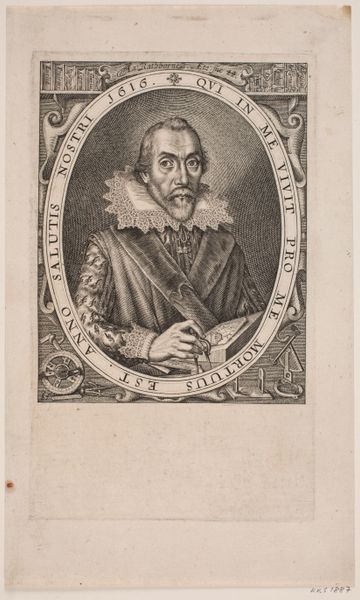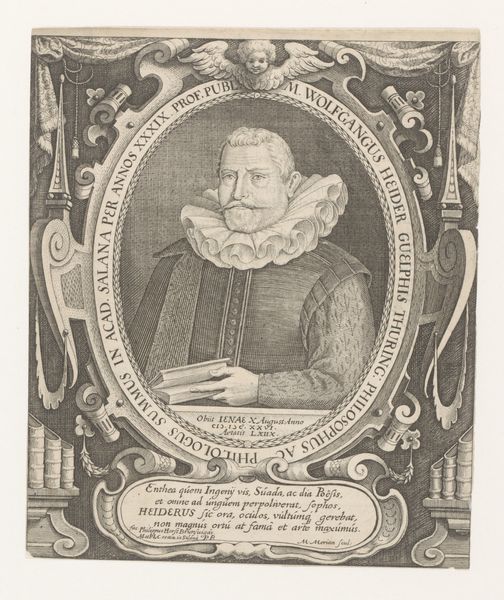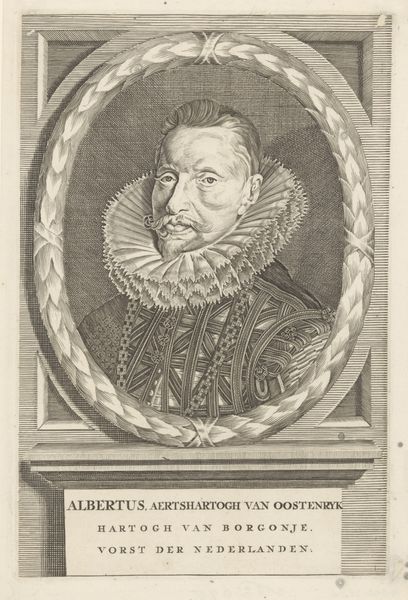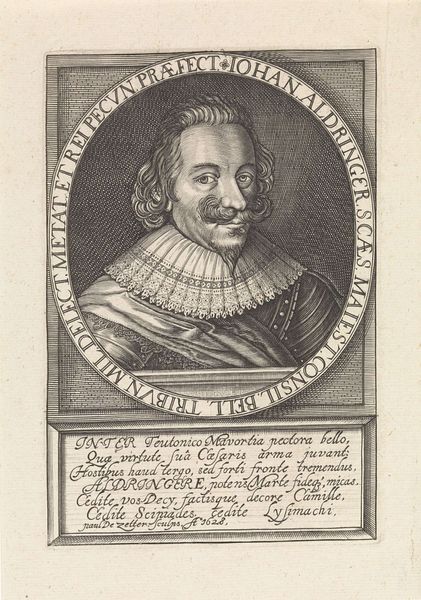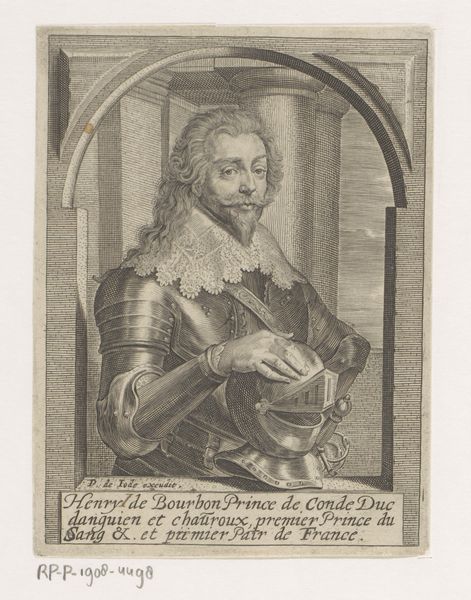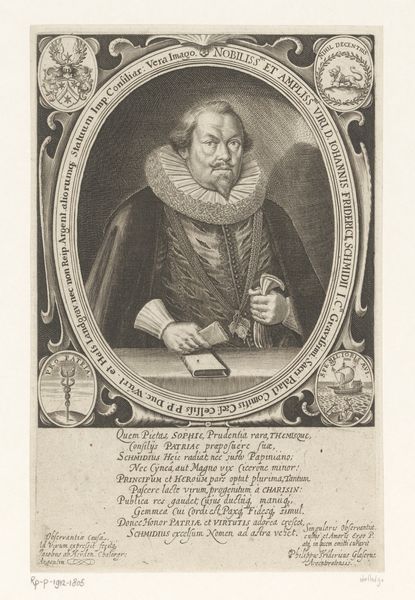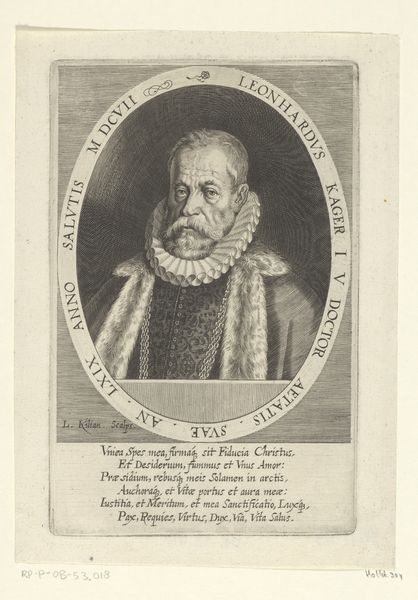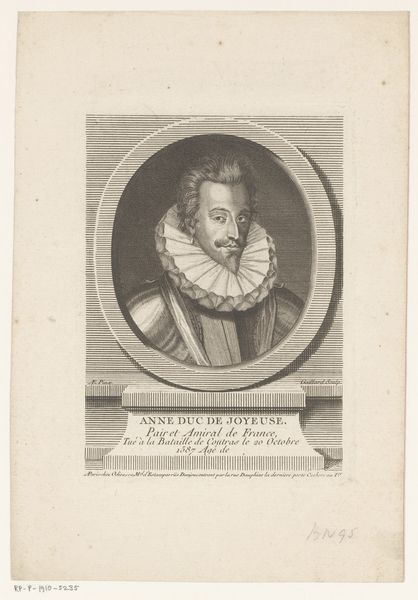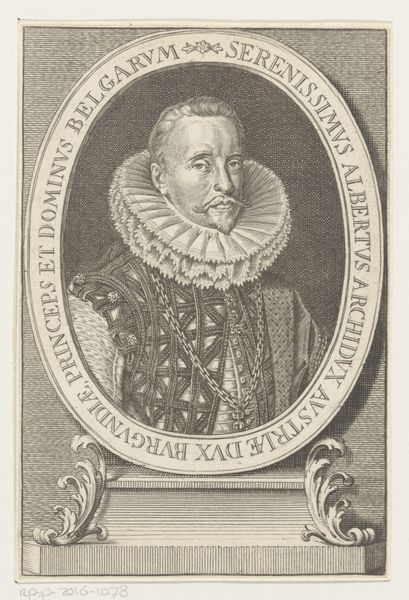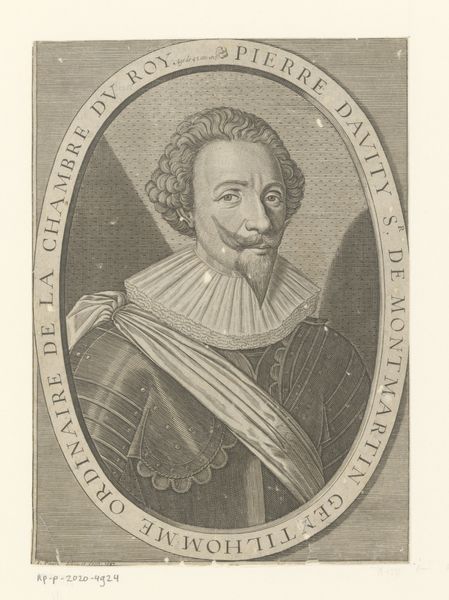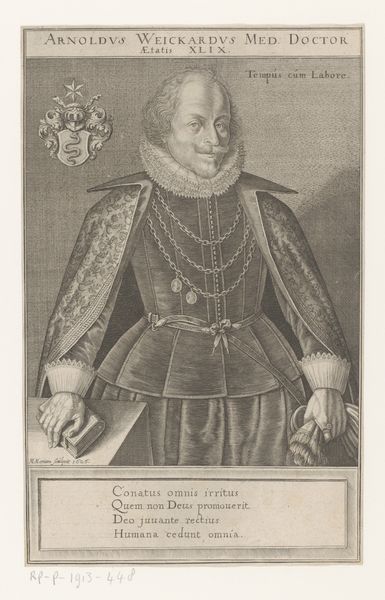
print, engraving
#
portrait
#
aged paper
#
toned paper
#
baroque
# print
#
old engraving style
#
portrait reference
#
limited contrast and shading
#
portrait drawing
#
engraving
Dimensions: plate: 21 x 15.1 cm (8 1/4 x 5 15/16 in.) sheet: 22.9 x 16.8 cm (9 x 6 5/8 in.)
Copyright: National Gallery of Art: CC0 1.0
Curator: This engraving by Simon van de Passe, created in 1623, portrays Count Ernest Mansfeld. It’s a fantastic example of Baroque portraiture rendered in print. The details, especially within the ornate oval frame, really capture the spirit of the era. Editor: My first impression is one of resolute authority. Despite the delicate lines of the engraving and the aged paper, the subject's gaze is striking. The decorative frame almost seems to contain and amplify his power. Curator: Absolutely. Mansfeld was a significant military figure during the Thirty Years' War. The print likely served as a form of political propaganda, reinforcing his image as a formidable leader and war hero for popular consumption. Consider how this image functioned within broader debates about the war and its impact. Editor: The choice to use engraving itself carries historical weight. Printmaking allowed for the mass distribution of his image. How did that impact the perception and reception of Count Mansfeld by diverse audiences at a time of immense social upheaval? Did its reach transcend class or geography? Curator: The proliferation of printed images significantly shaped public opinion during the era. Engravings like this could circulate widely, reaching audiences beyond the elite circles who commissioned painted portraits. However, we also need to consider the limitations. Literacy was still limited, and access to these prints would have varied greatly. Editor: So the image could simultaneously act as an elite signifier while functioning as propaganda? I find it fascinating how even seemingly straightforward portraits are embedded in a complex web of social and political meaning. Who were the engravers? Were they themselves politically motivated? What would their networks have been? Curator: Those are essential questions. Van de Passe, the engraver, was part of a network of artists and printers who played a key role in disseminating information and shaping perceptions. His choices in terms of style, composition, and the inclusion of text all contributed to the overall message. And we have to be conscious of what these sorts of portrayals leave out, especially regarding his troops and those impacted by warfare. Editor: Right. It really urges me to examine how such representations, while seemingly about an individual, function within larger systems of power and control during periods of intense social conflict. This image of power serves as a poignant entry point to explore crucial questions of history, representation, and political engagement.
Comments
No comments
Be the first to comment and join the conversation on the ultimate creative platform.
